Why are 401k’s so important?
The 401k is an important savings vehicle. Since the reduction of pensions across America, the popularity of the 401k has increased significantly and these nest eggs are crucial to retirement success. According to research by Fidelity, 401k accounts have increased not just from market performance, but also due to investing behaviors and increased investing rates. Retirees used to live off of the three-legged stool of their pensions, social security and any additional savings they had accumulated. However, most companies have moved away from pensions and are now transferring retirement planning to the employee while providing some additional support with matching contributions.
The 401k is a recent creation that came about after Congress signed the Revenue Act of 1978 with a provision in the Internal Revenue Code – Section 401k – which defers taxation of an employee’s compensation. The traditional 401k allows an employee to defer a certain percentage of their salary into a qualified investment account. Employers are then able to contribute a certain “match” or percentage of the employee’s contributions. This could be 100% up to the first 5% or maybe 100% up to 4% or even 50% to 2%. The maximum amount for employee contributions to a 401k in 2020 is $19,500. If over the age of 50, a participant can contribute an additional catch up contribution of $6,500 per year or $26,000 overall. Employers can also make contributions regardless of employee contributions through profit sharing and other deferred compensation. The overall limit for all contributions into a 401k for 2020 is currently $57,000 and $63,500 for those aged 50+.
Why is the 401k such an important savings vehicle? It is necessary to keep in mind the idea of compounding interest. Although contribution limits increase after turning 50, employees are highly encouraged to start utilizing a 401k account as early as possible in order to reap the benefits of compound interest. A traditional 401k contribution is made with pre-tax dollars and allowed to grow tax free. Ordinary income taxes are then paid on the withdrawal in retirement. Usually, a withdrawal made prior to age 59 ½ would incur a 10% penalty, however the Coronavirus Aid, Relief, and Economic Security Act (CARES Act) which was signed on March 27, 2020 waives the penalty on distributions of up to $100,000 for 2020 if an employee’s financial situation has been affected by the pandemic.
Since a 401k contribution is deducted from your paycheck, it can help reduce your taxable income for the current year and could help prevent the IRS from moving you into a higher tax bracket. However, because the contributions are pre-tax and grow tax deferred, the IRS would like their money back at some point. Therefore, they created what is called the Required Minimum Distribution or “RMD.” The RMD amount is determined by the account’s balance during the previous year as of December 31st, multiplied by a life expectancy factor. Previous to 2020, the RMD age was 70 ½. However, due to the recently passed SECURE ACT (Setting Every Community Up for Retirement Enhancement) signed in December 2019, the age was pushed back to 72 (as long as you turned 70 1/2 after January 1, 2020). Also, with the new law came the 10-year distribution rule, stating that non-spousal beneficiaries may no longer stretch their inherited retirement account as an RMD based on their life tables, but rather the whole amount must be distributed within 10 years of the owner’s passing.
The general rule of thumb is that you should be contributing 20% of your income to investment accounts or maxing out contribution limits, but that may not be feasible for everyone. There is no way to guarantee the so-called number needed in retirement and there is no equation or crystal ball to answer the questions “have I saved enough?” or “how much do I need?” because circumstances and market changes are not linear. What you can do is focus on contributing as much as possible to a 401k plan that is diversified through low cost ETFs and matches your risk tolerance.
It is also important to manage behavior and not make decisions based on fear such as stopping contributions or making an unwarranted move to bonds. Employees need to continue to contribute monthly into retirement accounts and this will eventually increase the probability of success in retirement which ultimately leads to financial freedom. With the end of 2020 approaching, you should max out your contribution if possible or at least contribute the percentage that is covered by your company’s matching policy. You can also sit down and discuss with a professional how the 401k can best fit into your overall financial plan.
Matthews Barnett, CFP®, ChFC®, CLU®
Financial Planning Specialist
Share This Story, Choose Your Platform!
Wiser Wealth Management, Inc (“Wiser Wealth”) is a registered investment adviser with the U.S. Securities and Exchange Commission (SEC). As a registered investment adviser, Wiser Wealth and its employees are subject to various rules, filings, and requirements. You can visit the SEC’s website here to obtain further information on our firm or investment adviser’s registration.
Wiser Wealth’s website provides general information regarding our business along with access to additional investment related information, various financial calculators, and external / third party links. Material presented on this website is believed to be from reliable sources and is meant for informational purposes only. Wiser Wealth does not endorse or accept responsibility for the content of any third-party website and is not affiliated with any third-party website or social media page. Wiser Wealth does not expressly or implicitly adopt or endorse any of the expressions, opinions or content posted by third party websites or on social media pages. While Wiser Wealth uses reasonable efforts to obtain information from sources it believes to be reliable, we make no representation that the information or opinions contained in our publications are accurate, reliable, or complete.
To the extent that you utilize any financial calculators or links in our website, you acknowledge and understand that the information provided to you should not be construed as personal investment advice from Wiser Wealth or any of its investment professionals. Advice provided by Wiser Wealth is given only within the context of our contractual agreement with the client. Wiser Wealth does not offer legal, accounting or tax advice. Consult your own attorney, accountant, and other professionals for these services.






